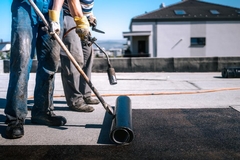
In a world where nature can wreak havoc on our homes and lives, understanding the materials we use for water damage prevention becomes essential. Water damage restoration companies such as RestoreMore play an important role in helping homeowners recover from the effects of water-related disasters.
In this guide, RestoreMore explores the differences between hydrophobic and traditional materials, with a focus on their effectiveness in preventing water damage.
Traditional Materials: A Brief Overview
Traditional materials like wood and drywall have been commonly used in construction for generations. They are generally more affordable and easy to work with; however, they also possess significant vulnerabilities to water.
Characteristics of Traditional Materials
-
Porosity: Traditional materials tend to absorb moisture, making them prone to warping, mold growth, and structural integrity loss.
-
Decomposition: Many traditional materials do not have a natural resistance to decay. Prolonged exposure to moisture can lead to deterioration, which can compromise the safety of your home.
-
Time-Consuming Repairs: Once water damage occurs, repairing or replacing traditional materials can be time-consuming and costly.
Hydrophobic Materials: A Modern Solution
Hydrophobic materials are a revolutionary approach to constructing water-resistant environments. These materials are designed to repel water instead of absorbing it, providing an effective preventive layer against water intrusion.
Characteristics of Hydrophobic Materials
-
Water Repellency: As their name suggests, hydrophobic materials do not allow water to penetrate. This can drastically reduce the likelihood of mold growth and structural damage.
-
Durability: Many hydrophobic materials use special coatings or structural components that enhance longevity and resilience against harsh environmental conditions.
-
Eco-Friendliness: Some hydrophobic solutions are crafted from sustainable resources, making them an environmentally conscious choice for homeowners.
Comparing Hydrophobic and Traditional Materials for Water Damage Prevention
To help homeowners understand which material is best suited for their needs, here's a detailed comparison of hydrophobic and traditional materials in terms of various factors:
Effectiveness Against Water Damage:
Hydrophobic materials excel in this category, as they effectively keep water at bay. In contrast, traditional materials can absorb moisture, leading to potential damage.
Cost Considerations:
While traditional materials may be budget-friendly initially, the costs associated with repairs and potential mold remediation can add up. Hydrophobic materials, although pricier upfront, can save homeowners significant costs in the long run due to their durability and reduced repair needs.
Longevity:
Hydrophobic materials typically outlast traditional materials because they do not degrade due to water exposure. Homeowners can rest assured knowing that their investment will protect their property for years.
Installation and Maintenance:
Traditional materials are often straightforward to install and maintain. However, this advantage comes with the risk of needing frequent repairs. Hydrophobic materials may require specialized installation but require less ongoing maintenance.
Environmental Impact:
Many modern hydrophobic materials are environmentally friendly; a critical consideration for eco-conscious homeowners. Traditional materials, while also recyclable in some cases, can significantly contribute to waste if they require replacement due to water damage.
Conclusion: Making the Right Choice
When choosing between hydrophobic and traditional materials for water damage prevention, it's important to consider both short-term costs and long-term benefits. While traditional materials may seem more affordable upfront, hydrophobic options provide superior protection and greater durability, which can help you avoid costly repairs down the line.
In a world where water damage can escalate quickly, investing in high-quality materials is key to protecting your home. For expert guidance and the best solutions, reach out to RestoreMore–your trusted partner in water, fire, and mold restoration.